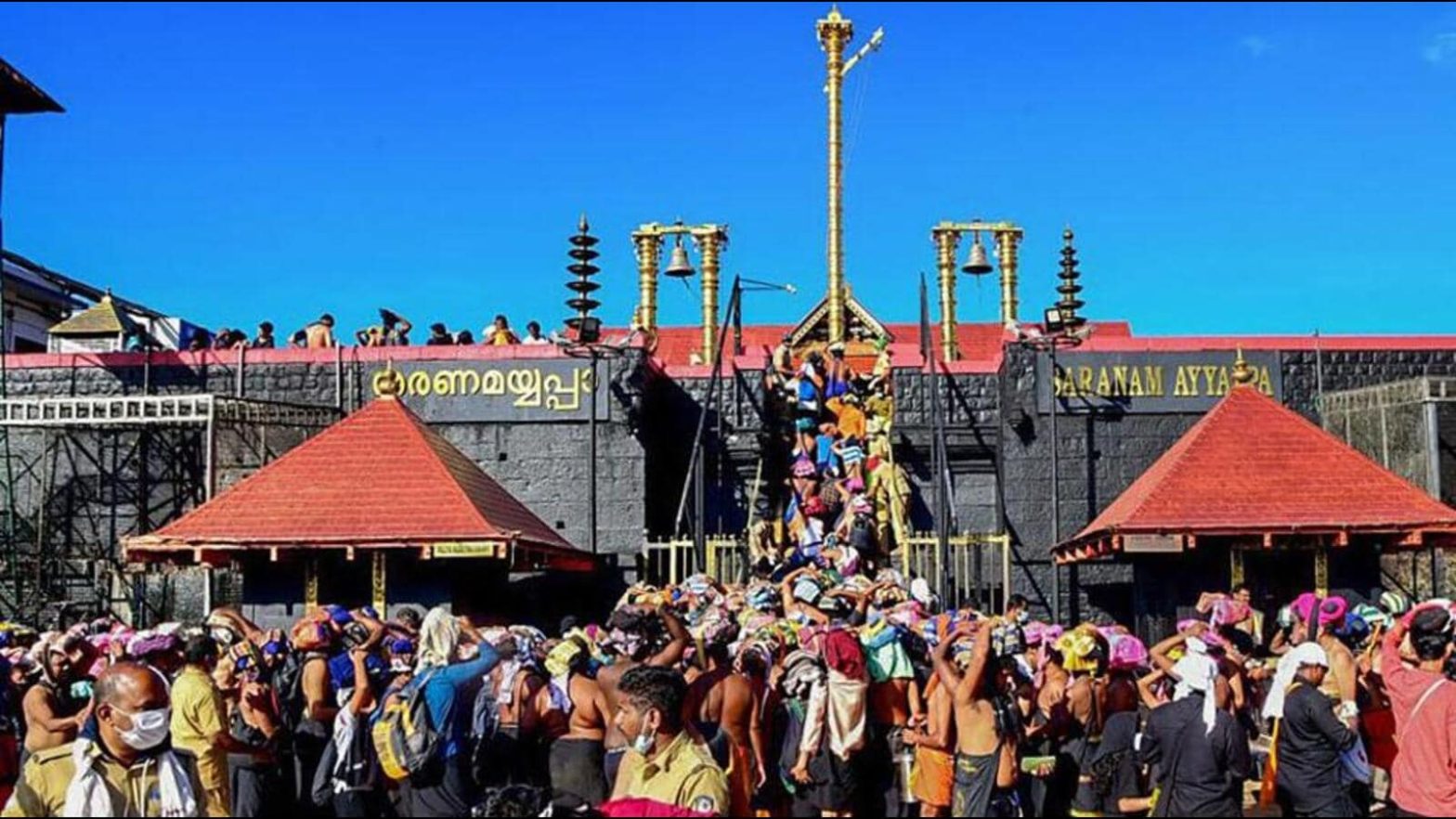Sabarimala, a renowned pilgrimage destination in the southern Indian state of Kerala, holds a special place in the hearts of millions of devotees, particularly among the followers of Lord Ayyappa. Nestled in the lush green forests of the Western Ghats, this sacred hill shrine attracts pilgrims from various parts of India and around the world. In this article, we will explore the history, significance, pilgrimage traditions, and natural beauty that make Sabarimala a unique destination.
Historical and Mythological Significance
- Lord Ayyappa: Sabarimala is dedicated to Lord Ayyappa, a revered deity in Hinduism. According to Hindu mythology, Lord Ayyappa is believed to be the son of Lord Shiva and Lord Vishnu (in the form of Mohini). His story is associated with the fulfillment of a divine mission and self-realization.
- The Sabarimala Temple: The temple at Sabarimala is one of the most prominent and sacred shrines dedicated to Lord Ayyappa. The temple is situated atop a hill, surrounded by dense forests and pristine streams. It is accessible by a challenging trek through the forested terrain.
Pilgrimage Traditions and Practices
- Mandalam-Makaravilakku Season: The pilgrimage season to Sabarimala typically spans from mid-November to mid-January, culminating with the Makaravilakku festival. Devotees undertake a rigorous 41-day fast and observe strict austerities during this period.
- Vratham (Austerities): Pilgrims follow a strict code of conduct, including abstaining from non-vegetarian food, alcohol, tobacco, and worldly pleasures. They also wear black or blue clothing and refrain from shaving or cutting their hair.
- Irumudi Kettu: One of the most significant aspects of the pilgrimage is the carrying of the “Irumudi,” a sacred bundle, on the head. It contains offerings for Lord Ayyappa, including coconut filled with ghee, rice, camphor, and other items. Pilgrims often carry the Irumudi in a cloth bundle with two compartments symbolizing the dual nature of Lord Ayyappa.
- Trek to Sabarimala: Pilgrims undertake a strenuous trek through the forested paths to reach the Sabarimala temple. The journey involves climbing steep hills, crossing rivers, and enduring challenging conditions. The path is lined with small shrines and rest stops.
- Petta Thullal: On reaching Sabarimala, devotees perform a special ritual called “Petta Thullal,” which involves dancing and chanting prayers in honor of Lord Ayyappa.
- Darshan and Offerings: Devotees stand in long queues for hours to have a glimpse of Lord Ayyappa in the sanctum sanctorum. Many offer prayers and light lamps. The traditional greeting among devotees is “Swamiye Saranam Ayyappa.”
- Makaravilakku: The Makaravilakku festival, celebrated on January 14th, is a grand event at Sabarimala. It is marked by the lighting of a divine lamp (vilakku) at the Ponnambalamedu hill, which is visible from Sabarimala. This event draws thousands of devotees.
Natural Beauty and Conservation
Sabarimala is not just a place of pilgrimage; it is also a haven for biodiversity. The surrounding forests are rich in flora and fauna. The temple authorities, along with government agencies, have implemented conservation measures to protect the fragile ecosystem of the Western Ghats.
Visiting Tips
- Pilgrims should be prepared for the challenging trek and adverse weather conditions, including rain and cold, during the pilgrimage season.
- Respect the local customs, traditions, and the sanctity of the temple.
- Follow the guidelines of the temple authorities and local authorities.
How to Reach
- By Air: The nearest airport to Sabarimala is Trivandrum International Airport, approximately 170 kilometers away.
- By Rail: The nearest railway station is Chengannur, about 90 kilometers from Sabarimala.
- By Road: Sabarimala is well-connected by road, and buses and taxis are available from major cities in Kerala.
Conclusion
Sabarimala is not just a pilgrimage destination; it is a spiritual journey that signifies devotion, discipline, and self-realization. It is a place where millions of devotees come together to seek the blessings of Lord Ayyappa and experience the beauty of the Western Ghats. The rigorous pilgrimage traditions, the natural splendor of the surroundings, and the sense of unity among devotees make Sabarimala a unique and revered destination in India.

